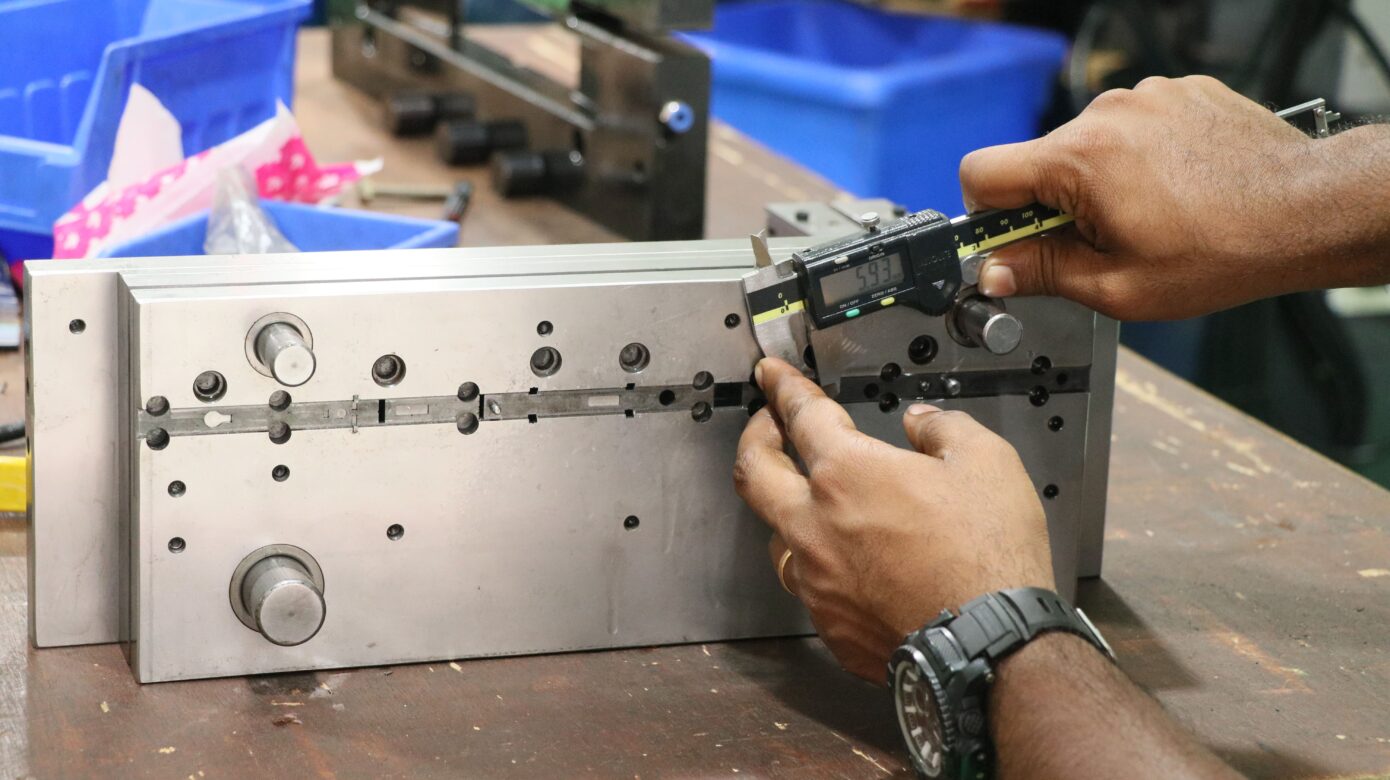Metal stamping in India – YSM

Metal stamping in India – YSM
YSM
Established in 1979 – YSM today has evolved into the Top 3 global leaders in providing Stamping and Bending manufacturing solutions. Our greatest asset is not just an effective workforce, but our well-trained and competent support team of over.

Metal stamping is a versatile and widely used metal forming process in manufacturing industries. It involves the shaping of metal sheets or coils into specific forms and designs through the application of force using dies and presses. This method has a broad range of applications, making it a crucial component of modern manufacturing.
Process Overview:
The metal stamping process typically involves several key steps:
- Material Selection: The process begins with the selection of a suitable metal material. Common materials include steel, aluminum, copper, and various alloys, each chosen for its specific properties such as strength, corrosion resistance, or conductivity.
- Blanking: In the blanking stage, a flat sheet or coil of metal is cut into a specific shape known as a blank. This blank is the starting point for the stamping process and will be further shaped and formed.
- Die Design: The design of the die, which consists of a male (punch) and female (die) component, is a critical step. The die is customized to the desired shape of the final product. Complex shapes may require multiple dies and stages.
- Stamping Operation: The blank is placed between the punch and die, and a press applies force to deform the material. This deformation can include bending, stretching, drawing, or piercing, depending on the desired outcome. The force exerted on the metal causes it to conform to the shape of the die.
- Trimming and Piercing: After the initial stamping operation, additional operations like trimming and piercing may be performed to remove excess material or create holes and openings in the part. This enhances the functionality and aesthetics of the finished product.
- Quality Control: Throughout the process, quality control measures ensure that each stamped part meets the required specifications. This can include dimensional checks, visual inspections, and material testing.
- Surface Finishing: In some cases, stamped parts may undergo surface finishing processes such as painting, plating, or powder coating to improve appearance and provide additional protection against corrosion.
- Assembly: Stamped components are often assembled into larger products or systems. These components can include brackets, connectors, and housings used in various industries like automotive, electronics, and appliances.
Applications of Metal Stamping:
Metal stamping is employed across a wide range of industries, contributing to the production of numerous products and components:
- Automotive: The automotive industry relies heavily on metal stamping for manufacturing vehicle body panels, chassis components, engine parts, and various structural elements. Stamped parts are crucial for vehicle safety, performance, and aesthetics.
- Electronics: Metal stamping is used in the production of electronic components such as connectors, brackets, and heat sinks. These components are essential for the assembly and functionality of electronic devices.
- Appliances: Household appliances, including refrigerators, washing machines, and ovens, feature stamped parts for structural support and functional elements like hinges and latches.
- Aerospace: Aerospace manufacturers use metal stamping to create aircraft components, including brackets, mounts, and structural parts. These components must meet stringent quality and safety standards.
- Construction: Metal stamping plays a role in the construction industry by producing structural and decorative elements like brackets, fasteners, and architectural details.
- Medical Devices: Stamped metal components are used in medical devices and equipment, contributing to their precision, durability, and cleanliness.
Advantages of Metal Stamping:
Metal stamping offers several advantages that make it a preferred manufacturing method:
- High Precision: Stamping processes can achieve tight tolerances and high precision, ensuring consistency in part dimensions and quality.
- Cost-Effective: Stamping is cost-effective for mass production due to its high production rates and material efficiency. Minimal material waste reduces overall production costs.
- Versatility: The versatility of metal stamping allows for the creation of complex shapes and geometries, making it suitable for a wide range of applications.
- Strength and Durability: Stamped components are known for their strength and durability, making them suitable for applications where structural integrity is critical.
- Efficiency: Stamping processes are highly automated, leading to efficient production and reduced labor costs.
- Consistency: Stamped parts have consistent quality and dimensional accuracy, contributing to overall product reliability.
In conclusion, metal stamping is a versatile and essential metal forming process that plays a significant role in the production of components and products across various industries. Its ability to provide high precision, cost-efficiency, and durability makes it a preferred choice for manufacturers looking to meet stringent quality standards and produce large quantities of high-quality parts. Metal stamping continues to drive innovation and advancement in modern manufacturing processes.